This book is dedicated to the memory of David Drazen, my nephew, who passed away at the age of seventeen in 1989 after a heroic five-year struggle with leukemia. Dave actively participated in his treatment since the age of twelve. Instead of complaining, he made the most out of every minute of his life, despite years of suffering, even as his chances of survival dwindled to nothing.
If he could make so much out of so little, we can certainly work to achieve our potential as individuals, act as positive influences in the lives we touch, and contribute in some way to preserving or restoring the integrity of the environment, no matter what lesser problems we must deal with.
It was an honor for me to be part of Daves life, and he will always be an inspiration to me.
Contents


An Introduction to Foraging
for Wild Plants
There are hundreds of fascinating, delicious wild vegetables, fruits, nuts and seeds, and herbs growing in our neighborhoods, backyards, parks, and forests that we overlook and disregard. Many are easy-to-recognize renewable resources you can easily collect and enjoy, with no harm to the environment. Many are the same prolific weeds we unsuccessfully try to destroy. When you know what they are and begin to use them, youll discover that they are tastier, as well as more nutritious, than anything you can buy, and theyre completely free.
This book will introduce you to the world of foraging and nature. We cover the most common useful wild plants of the continental United States (with the exception of subtropical Florida, which has a different, specialized flora) and southern Canada, with the basics of what you need to know to identify, collect, use, and appreciate them. My years as a naturalist draw on pertinent science, nutrition, folklore, and personal experiences to put the plants in context.
Since our focus is on the best, as well as the most practical, common, and widespread wild edible plants, many species you may find in other field guides are omitted. Wildflower, tree, and mushroom field guides in the Bibliography will help you identify a wide range of nonedible and marginally useful species. This book covers the choice edible species in full detail.
Many marginally edible plants just arent worth your effort: Ive waded through frigid, muddy ponds to collect the tender young unfolding leaves of water lilies (Nymphaea species). After washing off the mud, cooking them, and serving them for dinner, I discovered that this vegetable tastesjust like the mud it grows in. Later on, I found that some of my field-walk participants, inspired by other sources, had similar experiences.
I once dried the leaves of skunk cabbage (Symplocarpus foetidus) in my food dehydrator for a week, again following recommendations elsewhere, then added them to a pot of chili. Chili should be hot, but this brew was something else. After I tasted one spoonful, the calcium oxalate crystals that should have been dissipated by drying began piercing my tongue, like thousands of microscopic needles. After half an hour of drinking and spitting out water, jumping up and down, and cursing the author, I flushed the entire concoction down the toilet. Subsequently, a friend rendered this plant harmless by drying it for six months, but then it tasted like paper. This plant, and edibles that require hours of preparation for a few bites, are omitted.
Ive been using many plants for food and home remedies since the late 1970s, and Id like to share my favorites with you. However, its beyond the scope of this book to cover the thousands of purely medicinal, nonedible plants that also grow in our midst. We concentrate only on the delicious wild foods you can sink your teeth into. Also, we dont cover mushrooms, because youd need a whole book to do them justice. Fortunately, there are many wonderful mushroom books on the market.
Most works on edible wild plants include recipes in which healthful wild plants are adulterated with refined and processed foods containing artificial chemicals. Its easy to make fantastic-tasting, nutritious meals without any of these. A large portion of this book is devoted to recipes and the ideas behind them, so youll learn to create all-natural wild meals yourself.
This book includes many detailed pencil drawings that clarify the plants identifying characteristics, and all their parts, as they appear throughout the seasons. Beginners seek out color photos, but these have disadvantages: Because leaves are green and flower colors can be described, color mainly raises a books price. This limits you to one view per plant, usually when its in flower, even when different stages are edible. Photos also contain extraneous details absent in good illustrations. Youll learn more from the greater number of excellent pencil illustrations we provide.

Poisonous plants, some of which are deadly, sometimes grow alongside edible plants, so you must identify every plant with 100 percent certainty before you eat it. There is no other foolproof method to determine whether something is edible. Look up all of a plants identifying characteristics, and make sure they match all your observations. Then, check the accompanying descriptions of any possible look-alikes (especially toxic species), to make sure their key identifying characteristics dont match.
Cross-check any reference books you use, especially regarding medicinal plants. Other sources may simply repeat folklore from earlier books, without regard for accuracy or safety. When you look up a plant in more than one book, make sure it has the same scientific name, or you may poison yourself with sloppy semantics. Edible and poisonous plants sometimes have the same common name, and names vary from region to region and country to country. Scientific names are universal, and longer-lasting.
Start by learning a few easy-to-identify plants well. There are some people whove accompanied me on my well-attended nature tours in and around New York City who want to learn the whole countrys flora in one afternoon. I am forced to announce that learning about too many plants at once causes not only confusion but permanent brain damage. The malady is called Dementia Botanica, and its first symptom is total destruction of good judgment: Victims laugh at my jokes.


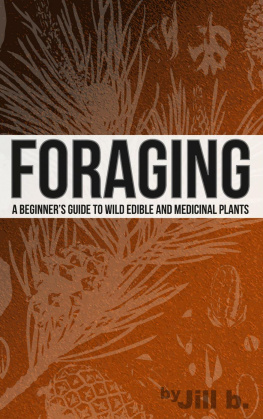
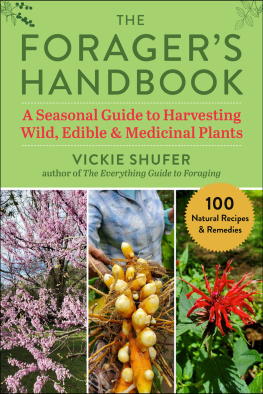
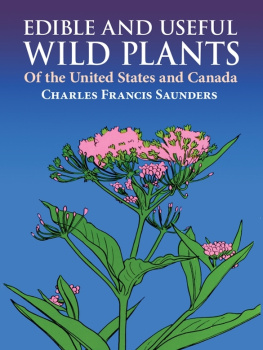
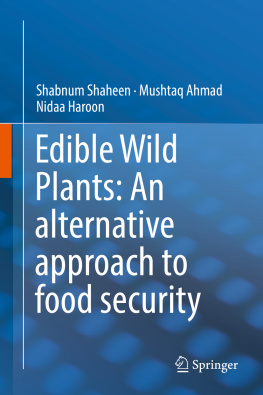
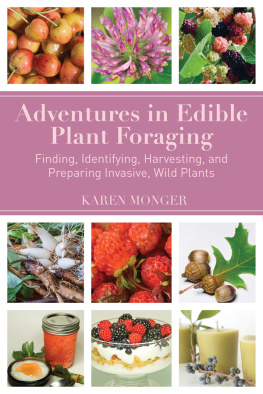
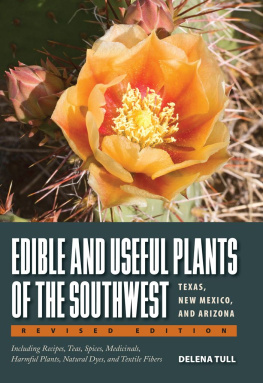

 and
and

